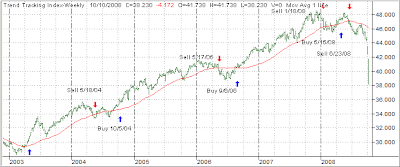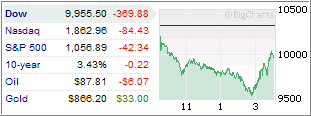 Last Thursday was unusual in that there were no emergency moves by the U.S. government, which to some was the best news we’ve had in a week.
Last Thursday was unusual in that there were no emergency moves by the U.S. government, which to some was the best news we’ve had in a week.
It gets pretty tiring to repeatedly hear the barking about the constant attempts to stem the fall of the market, none of which have worked so far and none if them will work in the future.
Mish at Global Economics put it best recently, when he elaborated on the crisis:
The world is heading for a global recession and a sure bet is that it will be blamed on a subprime crisis in the US. The reality is the greatest liquidity experiment in history is now crashing to earth.The root cause of this crisis is fractional reserve lending, and micromanagement of interest rates by the Fed in particular and Central Banks in general. The Fed started the party by slashing interest rates to 1%, but Central Banks everywhere drank the same punch to varying degrees.
The Greenspan Fed lowering interest rates to 1% fueled the initial boom, but like an addict on heroin, the same dose a second time will not have the same effect. The Fed, the ECB, etc. could have slashed rates to 0% today and it would not have mattered one bit. The reason is simple: There is no reason for banks to go on a lending spree with consumers tossing in the towel, unemployment rising, and rampant overcapacity everywhere one looks with the exception of the energy sector.
Consumers are tapped out, not just in the US, but in nearly every country on the planet. We had our party, and a fine party it was. However, the party is over and the bill is now past due. The price is a global recession. That price must be paid no matter what Central Banks do.
Despite this tremendous market drop, which has annihilated many portfolios, there is bound to be some rebound on the horizon. Chances are that it will be a dead cat bounce, so I would not count on that being the reversal leading to a long-term recovery.
I have said before that this bear market has the potential to make the 2000 – 2002 period look like a walk in the park and so far, unfortunately, it already has exceeded the severity of that period.
Staying on the sidelines until a clear uptrend can be identified is the wisest course of action.





